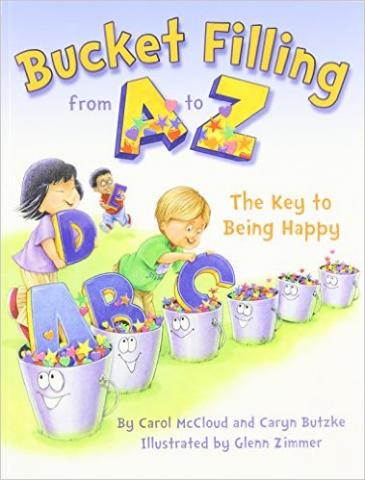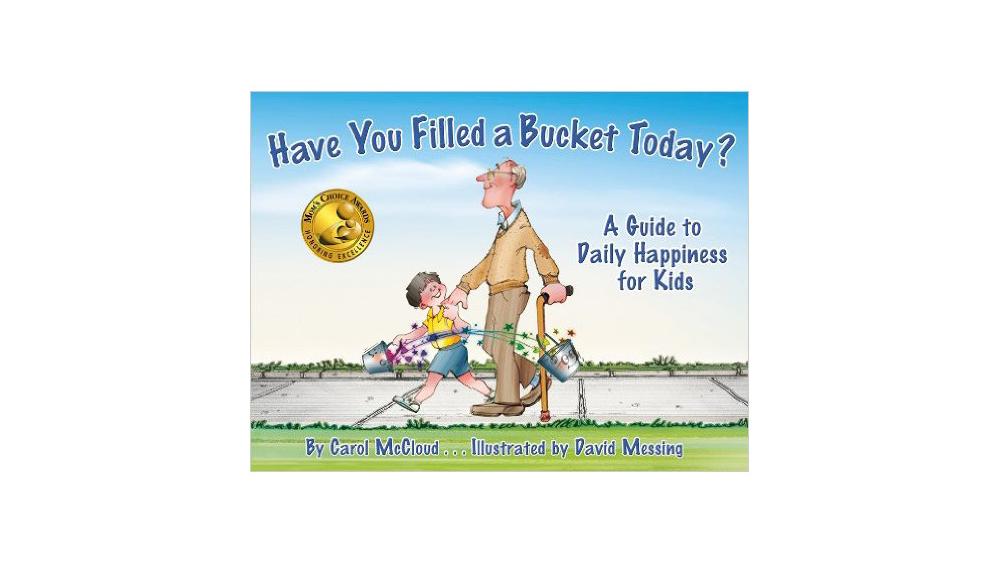These are very welcome gifts that won't cost you a dime.
 You will find this little rhyme on the "G page" of an award-winning picture book, Bucket Filling from A to Z: The Key to Being Happy.
You will find this little rhyme on the "G page" of an award-winning picture book, Bucket Filling from A to Z: The Key to Being Happy.December is a month of traditions that include purchasing, wrapping, and giving gifts. However, long before we turn our calendars to December, we will have seen and heard an enormous number of advertisements for things we "must buy" for our families, our friends, and ourselves. Many of us find it hard to ignore these commercial messages and find ourselves amazed when, in January, the bills begin to arrive and dip into our budgets and our buckets.
However, there are many gifts that are not for sale, cost little or nothing, and are truly bucketfilling expressions of love. There are gifts that are acts of service, helping to paint a room or clean out a friend's garage or relative's basement. Enjoying time with friends on an outing or planning a trip together are gifts. Or, how about the gift of a handmade coupon for two 15-minute foot rubs?
Gifts can be words of affirmation, a note of appreciation or a handwritten letter listing five or ten reasons why you love someone. Gifts can be handmade or homemade; a tray of your special cookies or a child's drawing. Wonderful gifts can be found in nature, a wildflower, seashell or an unusual stone. They can be photographs (old or new) and/or time spent reminiscing with a loved one. They can also be two sincere sentences, "You don't need to buy me anything this year because YOU are the best gift I've ever been given. You fill my bucket all year long."
The best gifts, the ones that truly fill buckets, are the ones wrapped in love.
Happy Bucket Filling!
For Learning to Give lessons that go with the book, Have You Filled a Bucket Today by Carol McCloud:
Buckets of Kindness: This K-2 lesson empowers students to be helpful and kind to peers. The students discuss this book and brainstorm ways to promote kind behaviors, take action for the common good, and decrease bullying behaviors.
Making a Difference in Our Community: In this 3-5 lesson, students identify some community and school needs. They respond to literature about being a kind person and making a difference. Working as a group, the students select a philanthropic project, formulate a plan, and execute that plan to address the need.
Building Blocks of Community: In this middle school lesson, students analyze and define the concept of community. The students identify benefits and sacrifices involved in actions for the common good in their role as citizens. Students may read Have You Filled a Bucket Today? to younger children and share the concept of philanthropy in the community.
Attributes of a Civil Society: In this high school lesson, students define justice, kindness, peace and tolerance. They identify these as attributes of a civil society and brainstorm how they can promote them in their school, community and the world. Students may read Have You Filled a Bucket Today? to younger children and share the concept of philanthropy in the community.
